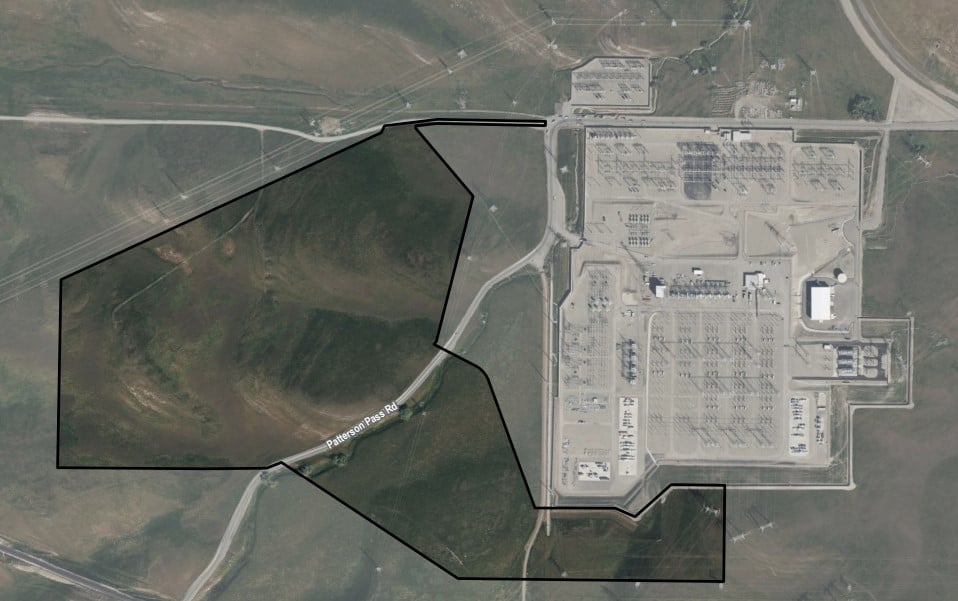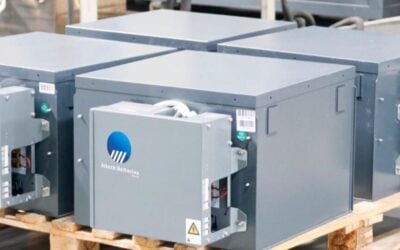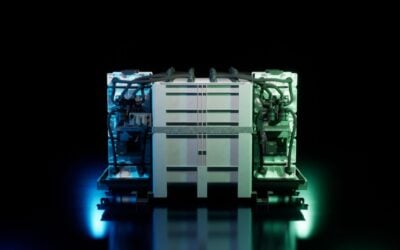
Capstone Infrastructure and Eurowind Energy’s proposed 3.2GWh BESS project in Alameda County, California, has become the latest to reach the final stage of the California Energy Commission (CEC) opt-in certification process.
Permitted under Assembly Bill (AB) 205, the CEC-administered scheme provides the developers of energy storage projects exceeding 200MWh with an alternative to approval processes carried out by local governments.
After first receiving the developers’ application on 7 August 2024, the CEC commenced formal review proceedings of Potentia-Viridi BESS on 29 August 2025, after deeming the application complete. As reported by ESN Premium in October last year, the project’s application proposes constructing a BESS asset with 400MW output to its 3,200MWh capacity (8-hour duration).
‘Innovate and deliver at scale’
The Potentia-Viridi long-duration storage project is being developed under the business subsidiary Levy Alaeda, LLC, a subsidiary of the two developers’ joint venture (JV) holding company Obra Maestra Renewables, LLC.
Try Premium for just $1
- Full premium access for the first month at only $1
- Converts to an annual rate after 30 days unless cancelled
- Cancel anytime during the trial period
Premium Benefits
- Expert industry analysis and interviews
- Digital access to PV Tech Power journal
- Exclusive event discounts
Or get the full Premium subscription right away
Or continue reading this article for free
The company was established by the US development arms of Canada’s Capstone and Denmark’s Eurowind back in 2022, specifically for US project development.
Around the time the JV submitted its application with the CEC, Vice President of Business Development at Capstone, Geoff Osborne, described a project of Potentia-Viridi’s size as having not been practical until recently.
“Projects like this are [now] increasingly common and a testament to the ever-growing demand for renewable energy across North America – and industry’s ability [to] innovate and deliver at scale,” said Osborne in a statement the Capstone VP posted to LinkedIn.
Although a BESS provider has yet to be publicly announced, the JV expects to utilise “the latest” lithium iron phosphate (LFP) technology for the project, which is expected to come online around June 2028.
Approvals timeline
With the CEC having deemed the JV’s application complete at the end of last month, the regulator now has 270 days (or until 26 May next year) to decide whether to approve the project.
As part of its initial project assessment, the CEC is working on a draft environmental impact report (EIR) due for publication before 26 January 2025.
Between 30 and 60 days after the CEC files its draft assessment, interested stakeholders and members of the public will have an opportunity to comment on the document during a public meeting to be hosted by the regulator.
As part of its opt-in assessment of the Potentia-Viridi project, the CEC held its first informational and scoping session on 18 September 2025.
Along with providing CEC staff an opportunity to introduce its approvals process, the meeting also gave local government officials a platform to speak publicly about the project for the first time as part of the opt-in scheme.
“I am very excited to hear about this project … I applaud the CEC for the work they do to help achieve our State [renewable energy] goals,” said council member for the City of Tracy, Dotty Nygard.
Planning Director for Alameda County, Albert Lopez, also welcomed the application and outlined his jurisdiction’s positive stance on renewable energy.
“Our board adopted policies related to energy storage a couple of years ago … generally speaking, the County has been supportive of renewable energy projects and we’re looking forward to seeing how the process unfolds,” said Lopez.
Alongside the Potentia-Viridi project, Alameda County is the proposed jurisdiction for another project currently under review by the CEC.
As reported by Energy-Storage.news, Spanish developer Ignis submitted an opt-in application with the CEC back in February for a 90.7MW/362.8MWh BESS.
Emerging approvals process
As of 23 September 2025, the CEC had deemed four applications for projects incorporating energy storage completed. The table below details the timelines associated with these projects.
| Project Name | Developer | Days Between Initial Submission and Complete Application | CEC Approval Deadline |
| Compass Energy Storage | Engie | 390 days | 1/25/2026 |
| Darden Clean Energy Project | Intersect Power | 315 days | 6/25/2025* |
| Potentia-Viridi BESS | Capstone, Eurowind | 387 days | 5/26/2026 |
| Soda Mountain Solar | VC Renewables | 373 days | 5/7/2026 |
*The CEC approved the Darden project on 11 June 2025.
With only four projects, data surrounding timelines is limited, however, it’s taking the CEC 366 days on average to deem an application complete. Considering the 270 days countdown on top of this, developers could have projects approved in as little as 21 months.
Although many local jurisdictions in California favour renewable energy projects, the CEC’s opt-in certification scheme and its strict approvals timeline is becoming an increasingly attractive option for developers of very large-scale battery storage projects.





